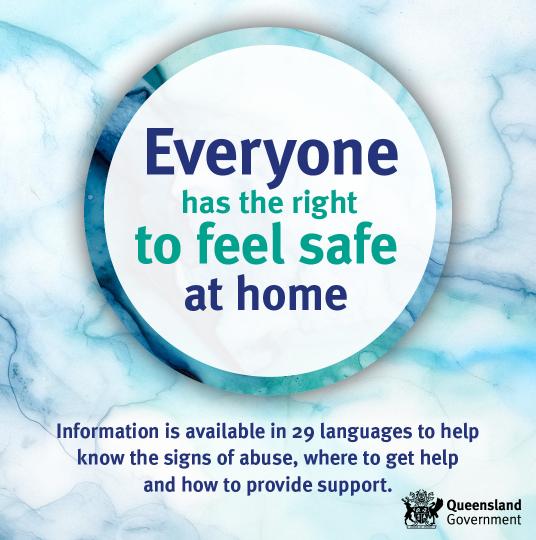
10 minute read
Storage of renewable energy
will help make that easier and secure,” Xinhua news agency quoted the Minister as saying. The digital identity environment currently lacks consistent standards, she said, adding this new bill will establish a framework for the provision of secure digital identity services. The framework will make it easier to prove digital identity, because accredited businesses will be recognised by a “trust mark”, making them eligible for streamlined processes, Andersen said.
Dutton said that the Liberal Party room supported recognition of Indigenous people in the constitution but opposed enshrining the consultative voice, instead
Advertisement
According to a poll published by News Corp Australia on Wednesday, more than 50 per cent of voters in five out of six states support the proposal. Nationally, 54 per cent of 4,756 respondents said they intended to vote yes on the referendum while 38 per cent were opposed. Over-65s were the only age group where more than half of respondents said they are against the proposal.
Aus launches national strategy to save iconic marsupial species
Canberra, April 6 (IANS)
Australian Prime Minister
Anthony Albanese and Environment Minister Tanya Plibersek on Thursday launched a national strategy to oversee the protection and recovery of the greater bilby -- an iconic marsupial species -- from extinction.
The rabbit-like mammal that can grow up to 55 cm long, once inhabited two-thirds of Australia’s mainland, reports Xinhua news agency.
As a result of habitat loss, bushfires and predation by introduced species, bilby populations now inhabit just 15 per cent of land mass -- mostly in central Australia.
“Unfortunately, over the years, bilby populations have shrunk considerably,” Albanese said.
“But we have a very special Easter message here today, a new plan to help protect the bilby.”
The government will invest A$5 million ($3 million) in programs to protect the species.
The new plan draws on Indigenous knowledge and research, with First Nations’ traditional owners in central Australia enlisted to remove and manage feral species and repair bilby habitats.
Environment Ministers from six of the seven mainland states and territories have signed on to the plan.
Plibersek said that with its pink ears, soft grey coat, and little bouncy feet, the greater bilby is an iconic Australian animal.
“Coming up to Easter, Australia’s answer to the Easter Bunny, the greater bilby deserves greater protection,” she said.
“In the lead-up to Easter, if you can choose between an Easter bunny and an Easter bilby, make sure you choose the Easter bilby.”
essential to net zero transition: Aus experts
on Wednesday called for significant investment in renewable energy storage to keep up with rising electricity demand.
The CSIRO released its roadmap for renewable energy storage in Australia, reports Xinhua news agency.
It found that the storage capacity of the national electricity market (NEM) could require a 10 to 14fold increase between 2025 and 2050 with demand projected to rise rapidly as the building and transport industries electrify.
technologies such as batteries and pumped hydro.
“Over the long-term storage will accelerate the integration of renewables, enhancing grid stability and reliability, and supporting decarbonization of industries,” Larry Marshall, chief executive of the CSIRO, said in a statement.

He said Australia needs a robust pipeline of projects that use diverse technologies supported by industry, government, research and community stakeholders.
Canberra, March 29 (IANS)
Australia’s Commonwealth
Scientific and Industrial Research Organization (CSIRO)
It said all forms of storage must be considered to meet growing demand on top of established
“There is no silver bullet for reaching net zero so we need multiple shots on goal, like from renewables, batteries, hydrogen, thermal storage, pumped hydro, sustainable aviation fuels and a host of new science-driven technologies.”
CSIRO Energy Director Dietmar Tourbier said all stakeholders recognized energy storage as a priority but that significant knowledge gaps remained, requiring further investigation to support informed action.
“Co-investment is required across the system to accelerate technology commercialization and scale up across a diverse portfolio of energy storage technologies,” he said.
Revised settlement agreement reached to compensate First Nations in Canada

Rights Tribunal (CHRT)’s compensation orders, will be submitted to CHRT for confirmation before being brought to the Federal Court for approval. If approved, the process to implement the settlement will begin, the statement said.
“More than 300,000 First Nations children and families have been waiting decades for recognition of the harms done to them through discriminatory practices,” said AFN Manitoba Regional Chief Cindy Woodhouse. She added that this final settlement agreement is a long overdue turning point for so many thousands of families.
AFN and the First Nations Child and Family Caring Society jointly launched a human-rights complaint in 2007 with allegations that Ottawa’s underfunding of on-reserve child welfare services amounted to discrimination, and that First Nations children were denied equal access to support ranging from school supplies and medical equipment.
CHRT eventually ruled in the complainants’ favour and last year the federal government offered to spend C$20 billion to reform the on-reserve child-welfare system and another C$20 billion dollars on compensation.
WHO turns 75, calls for health equity
emergency care targeting 25 per cent of nurses and midwives in 25 low and middle-income countries by the end of 2025. The programme will provide nurses and midwives with the skills and competencies needed to make a major difference in saving lives.

“The WHO’s own story began 75 years ago, and it is still being written. The challenges we face today are very different to those in 1948, but our vision remains unchanged: the highest possible standard of health, for all people,” Tedros added.
Climate change can drive global outbreaks in dengue, Chikungunya: WHO
the major risk factors, that allow mosquitoes to adapt better to new environments and spread the risk of infection geographically further, including to the European region.
“We are really at the right time to scale up the advocacy for the threat of arboviruses globally,” spread of vectors into new regions, Velayudhan noted.
“And in terms of climatic change, certainly increased precipitation, higher temperature, higher humidity all favours the mosquito,” he said, adding “the virus and the vectors also multiply faster in higher temperature.”A
New Delhi, April 6 (IANS)
Climate change can lead to global outbreak of mosquito-borne diseases dengue, zika and chikungunya, warned the World Health Organization on Wednesday.
The incidence of infections caused by arboviruses, such as dengue, Zika and chikungunya, has grown dramatically around the world in recent decades.
About half of the world’s population is now at risk of dengue with an estimated 100-400 million infections occurring each year.
Chikungunya virus (CHIKV) is found on nearly all continents and to date, 115 countries have reported transmission.
While Zika virus disease has declined globally, to date, 89 countries have current or previous spread of Zika virus. These diseases, that spread from mosquitoes to people, are causing an increasing number of outbreaks worldwide, with climate change, deforestation and urbanisation being some of
Dr Raman Velayudhan, Unit Head, Global Programme on control of Neglected Tropical Diseases, WHO, said at a media briefing session.
Velayudhan said around 129 countries are at risk of dengue and it is endemic in over 100 countries. From about half a million cases in 2000, it has exponentially grown to 5.2 million in 2019. This increasing trend is continuing in 2023 where till the end of March 2023, 441,898 cases and 119 deaths have been reported.
“This is really worrying because this shows that climate change has played a key role in facilitating the spread of the vector mosquitoes down south and then when people travel, naturally the virus goes along with them,” he said, adding “this trend is likely to continue for the rest of the world”.
Movement of people, urbanisation and associated problems with water and sanitation, are the factors leading to continuous
Diana Rojas Alvarez, WHO’s technical lead on chikungunya and zika, stressed the need for urgent action to rein in the spread of the mosquitos, amid fears of larger outbreaks in new areas.
“The mosquitos and these diseases have with climate change been increasing ... by altitude and by latitude,” Rojas Alvarez said, describing the situation as “alarming”. Further, Velayudhan explained that with dengue, which comes in four closely related serotypes, people who are reinfected with another serotype often develop severe disease. This “can lead to organ failure and death”, Velayudhan warned, adding that “this is a big threat to the world, because most of the countries nowAhave all four serotypes in circulation.”
He called for countries to boost mosquito control and “be on the alert” to detect when the diseases are spreading “to avoid any major outbreak.”
Air pollution can affect your Covid vaccine efficacy: Study
vaccination) deserves further investigation, the researchers warned, in the study published in Environmental Health Perspectives.
“Air pollution can induce chronic inflammation, which has been associated with a negative effect on vaccine efficacy,” said Carlota Dobano, researcher from ISGlobal.
on the Spike protein contained in the vaccine). Exposure to fine particulate matter (PM2.5), black carbon (BC), nitrogen dioxide (NO2) and ozone (O3) was estimated for each participant based on his or her address before the pandemic.
New Delhi, April 7 (IANS) Adults hospitalised with the Omicron variant have a higher death rate than those hospitalised with seasonal influenza, even though Omicron is considered less virulent with lower case fatality rates than the Delta and Alpha strains, new research has revealed.
The study by Dr Alaa Atamna and colleagues from the Rabin Medical Center at Belinison Hospital in Israel found that adults (18 years or older) hospitalised with influenza were 55 per cent less likely to die within 30 days than those hospitalised with Omicron during the 2021-2022 influenza season.
Influenza and Covid-19 are both respiratory diseases with similar modes of transmission.
To find out more, researchers compared the clinical outcomes of patients hospitalised with Covid-19 (Omicron variant) and those hospitalised with influenza at a large academic hospital in Israel.
Overall, 63 patients died within 30 days -- 19 admitted with influenza and 44 hospitalised with Omicron. Patients with Omicron tended to have higher overall comorbidity scores, needed more assistance performing activities of daily living (washing and dressing), and were more likely to have high blood pressure and diabetes, whereas asthma was more common in those hospitalised with influenza.
Respiratory complications and need for oxygen support and mechanical ventilation were also more common in Omicron cases than in seasonal influenza.
“A possible reason for the higher Omicron death rate is that patients admitted with Omicron were older with additional major underlying illnesses such as diabetes and chronic kidney disease,” said Dr Atamna. The difference might also be due to an exaggerated immune response in Covid-19, and that vaccination against Covid-19 was far lower among patients with Omicron,” he added.
Lack of Wuhan data disclosure by China is simply inexcusable: WHO
New Delhi, April 7 (IANS) The World Health Organisation (WHO) has slammed China once again, saying the country should have shared viral samples from Wuhan which was the epicentre of the pandemic, immediately, and not three years later.
London, April 6 (IANS) People exposed to higher levels of air pollution before the pandemic are likely to have lower antibody responses to Covid-19 vaccines, suggests a study.
In particular, exposure to fine particulate matter (PM2.5), nitrogen dioxide (NO2) and blank carbon (BC) was associated with about a 10 per cent decrease in IgM and IgG antibody responses in people without prior infection, said researchers from the Barcelona Institute for Global Health (ISGlobal), and the Germans Trias i Pujol Research Institute (IGTP) in Spain. The fact that previous infections lead to higher vaccine responses could explain why the effect of pollutants was only observed in people without a prior infection. However, the role of long-term exposure to air pollution on hybrid immunity (infection plus
“Our findings are consistent with evidence that persistent organic pollutants reduce vaccine responses in children,” she added. Air pollutants have been shown to affect immune responses. Previously it has been linked to adverse health outcomes, including lung cancer, cardiovascular and respiratory disease, and diabetes.
The team analysed data from 927 participants (aged 40 to 65 years), who answered questionnaires and gave blood samples in the summer of 2020 (right after the first lockdown) and in 2021 (after the start of Covid-19 vaccination).
All had received one or two doses of the main Covid-19 vaccines administered in Spain (made by AstraZeneca, Pfizer or Moderna).
The research team measured IgM, IgG and IgA antibodies to five viral antigens (three of them
The results show that in uninfected individuals, pre-pandemic exposure to PM2.5, NO2 and BC was associated with a 5 per cent to 10 per cent reduction in vaccine-induced Spike antibodies.
The decrease in antibodies was shown both for early IgM responses and late responses measured by IgG. The IgG response after the first dose peaked later in participants exposed to higher air pollution levels, and lower IgG levels persisted for several months after vaccination. Results were similar for the three vaccines. The study did not look at whether the reduction in antibody responses led to an increased risk of breakthrough infections and their severity. However, the findings add to the growing body of evidence on the adverse effects of air pollution even at the relatively low levels observed in Western Europe, the researchers said, while calling for stricter air pollution limits.
Maria Van Kerkhove, technical lead for Covid-19 response at WHO, wrote in the prestigious journal Science that earlier this month, the global health agency learned that scientists in China possessed data on viral samples from Wuhan that had been gathered in January 2020.
“These should have been shared immediately, not 3 years later. The lack of data disclosure is simply inexcusable,” she said. The WHO continues to call on China and all countries to share any data on the origins of SARS-CoV-2 immediately.
“China has advanced technical capabilities and I, therefore, believe that more data exist that have yet to be shared -- on the wild and farmed animal trade; the testing of humans and animals in Wuhan and across China; the operations of labs in Wuhan working on coronaviruses; the earliest potential cases; and more,” Van Kerkhove wrote. She said the world needs to move away from the politics of blame and, instead, exploit all diplomatic and scientific approaches so that the global scientific community can collaborate and find evidence-based solutions to thwart future pandemics.
China made Covid-19 disease official on December 31, 2019.
Last month, US President Joe Biden signed a bill to declassify intelligence information on the origins of the Covid pandemic, which has so far claimed more than seven million lives globally. Under the new legislation, Director of National Intelligence Avril Haines has 90 days to declassify all information on possible links between the Wuhan Institute of Virology and the origins of Covid.
The Wuhan Institute of Virology has been a major centre of coronavirus research.
The US Energy Department in February concluded with “low confidence” that the Covid-19 virus leaked out of a laboratory in China.




